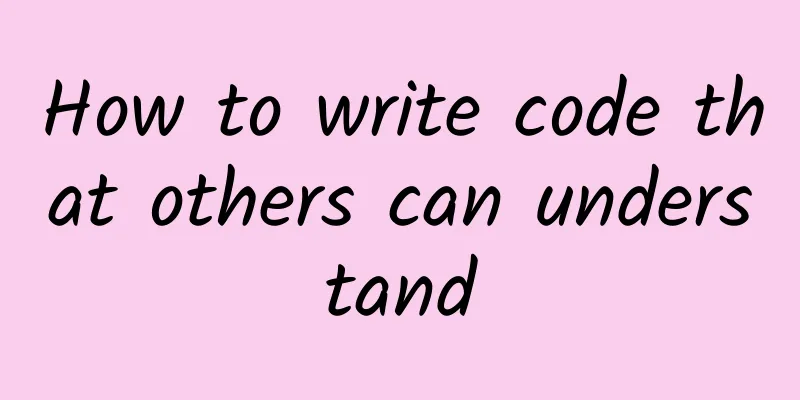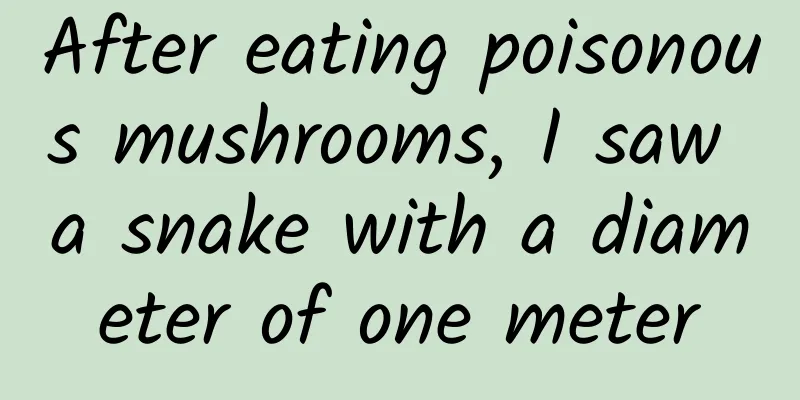How to write code that others can understand

|
With the continuous development of the software industry, there are more and more legacy programs, and the maintenance cost of the code is getting higher and higher, even higher than the development cost. The development of new features often relies on old code, and the time spent reading old code is almost longer than writing new code. I read a book a few days ago, and there was a sentence in the book: “Complex code is often written by novices. Only experienced experts can write simple, expressive code.” Although this statement is a bit exaggerated, it also illustrates the importance of experience. The code we write needs to be read by others in addition to being executed by machines. So we have to write: Code that others can understand Extensible code Testable code (code should be testable, writing tests for non-testable code is a waste of life) Points 2 and 3 emphasize object-oriented design principles. This article focuses more on local code issues. By giving examples, this article summarizes common mistakes and optimization methods. The examples in this article are based on two guiding principles: 1. DRY (Don't repeat yourself) This principle is so important because: Less code means fewer bugs Code without duplicate logic is easier to maintain. When you fix a bug, if the same logic appears in another place without you realizing it, do you feel wronged? 2. TED Principles Terse Expressive Do one thing 3. Examples 1. Avoid comments and use code to illustrate comments Counterexample:
After refactoring:
Good code naming can completely replace the role of comments. If you are trying to write a comment, from a certain perspective, you are trying to write a piece of code that others cannot understand. When you cannot come up with an accurate name for your method, it is likely that your method does more than one thing and violates the Do one thing rule. Especially when you want to add words such as And, Or, If to the method name. 2. Assigning values to Boolean variables Counterexample:
After refactoring:
3. Double Negation Conditional Judgment Counterexample:
After refactoring:
Whether you have seen such conditions or not, I have. When I saw such conditional judgments, I was immediately dizzy. 4. Refuse HardCode and Dig a Hole Counterexample:
After refactoring:
Since we are using a strongly typed language, we can use the compiler's functionality to make errors occur during the compilation phase. 5. Reject magic numbers and avoid traps Counterexample:
After refactoring:
The so-called magic number is a magic number. The reader has no idea what your number is. This kind of code is often seen. 6. Complex conditional judgment Counterexample:
After refactoring:
Do you feel a sudden sense of enlightenment? 7. Nested judgment Counterexample:
return isValid; After refactoring:
The first code is inspired by some early ideas: using a variable to store the return result. It turns out that you should return as soon as you know the result. #p# 8. Use preconditions Counterexample:
After refactoring:
The refactored style is closer to contract programming. The prerequisites must be met first, otherwise there is no point in talking about it. 9. Too many parameters, more than 3 Counterexample:
After refactoring:
Too many parameters make it difficult for readers to grasp the intent of the code, and too many parameters will affect the stability of the method. It also indicates that the parameters should be aggregated into a Model. 10. Method signature contains Boolean parameters Counterexample:
After refactoring:
Boolean parameters tell the method to do more than one thing, violating the Do one thing 10. Write expressive code Counterexample:
After refactoring:
Compared with imperative code, declarative code is more expressive and concise, which is one of the reasons why functional programming is becoming more and more popular. 4. About DRY When we refactor code, an important idea is DRY. I want to share a counterexample of DRY: There will be various MODEL layers in the project architecture, such as DomainModel, ViewModel, DTO. In many cases, most of the fields in these models are the same, so some people will think of the DRY principle and simply use one type to save copying and pasting and converting back and forth. The fundamental reason why this counterexample fails is that these models have different responsibilities. Although the content is repeated in most cases, they play different roles. Consider this scenario: DomainModel has a field DateTime Birthday{get;set;}, and ViewModel also has DateTime Birthday{get;set;}. Requirements upgrade: The interface no longer displays birthdays, but only whether an adult is required. We only need to add a Bool IsAdult{get{return ....}} to the ViewModel, and the DomainModel does not need to change at all. |
<<: Entrepreneurs are "sick", and winter is the best medicine
>>: What to expect from Google's September 29 event
Recommend
How to reduce APP uninstall rate? Here are seven ways!
The mobile application market is now a crowded ma...
How to view Huawei Software Development Cloud's implementation of DevOps in the era of microservices
[Original article from 51CTO.com] Cloud computing...
Tips for making creative advertising promotions near WeChat, use them well to triple your sales! Case Analysis
"The Big Dipper points to the southeast, and...
Who will win between open Android consoles and semi-closed overseas consoles?
The PS4 was released in mainland China last month...
Autonomous driving is just a story for Didi, not reality
Didi’s “big transportation” story may have been t...
Li Songwei's 21-day training camp makes changes happen steadily and continuously
Li Songwei's 21-day training camp allows chan...
Strategies for developing a brand marketing plan!
As the year draws to a close, major brands have j...
Huadu WeChat ordering mini program development, how much does it cost to develop a food ordering mini program?
Nowadays, many offline businesses are trying out ...
Stockpiling medicines is fun for a while, but if you keep stockpiling medicines, you will...
A few days ago, a netizen in Chongqing posted a m...
Why is it so difficult for Imagination to find a buyer after leaving Apple?
Following Apple's previous announcement that ...
How to operate an event? One picture is enough! !
First of all, we must understand that activities ...
Event promotion: A collection of 54 event cases for the 2019 Spring Festival!
During the Spring Festival, major Internet platfo...
Profit margin of 1.8%: Xiaomi is playing a game that will never be completed
Recently, through the announcement of Xiaomi'...
How to build a product operation and promotion system for two-dimensional products?
The analysis in this article is mainly to underst...
How to write an activity planning proposal?
The end of the year is approaching and various ac...









